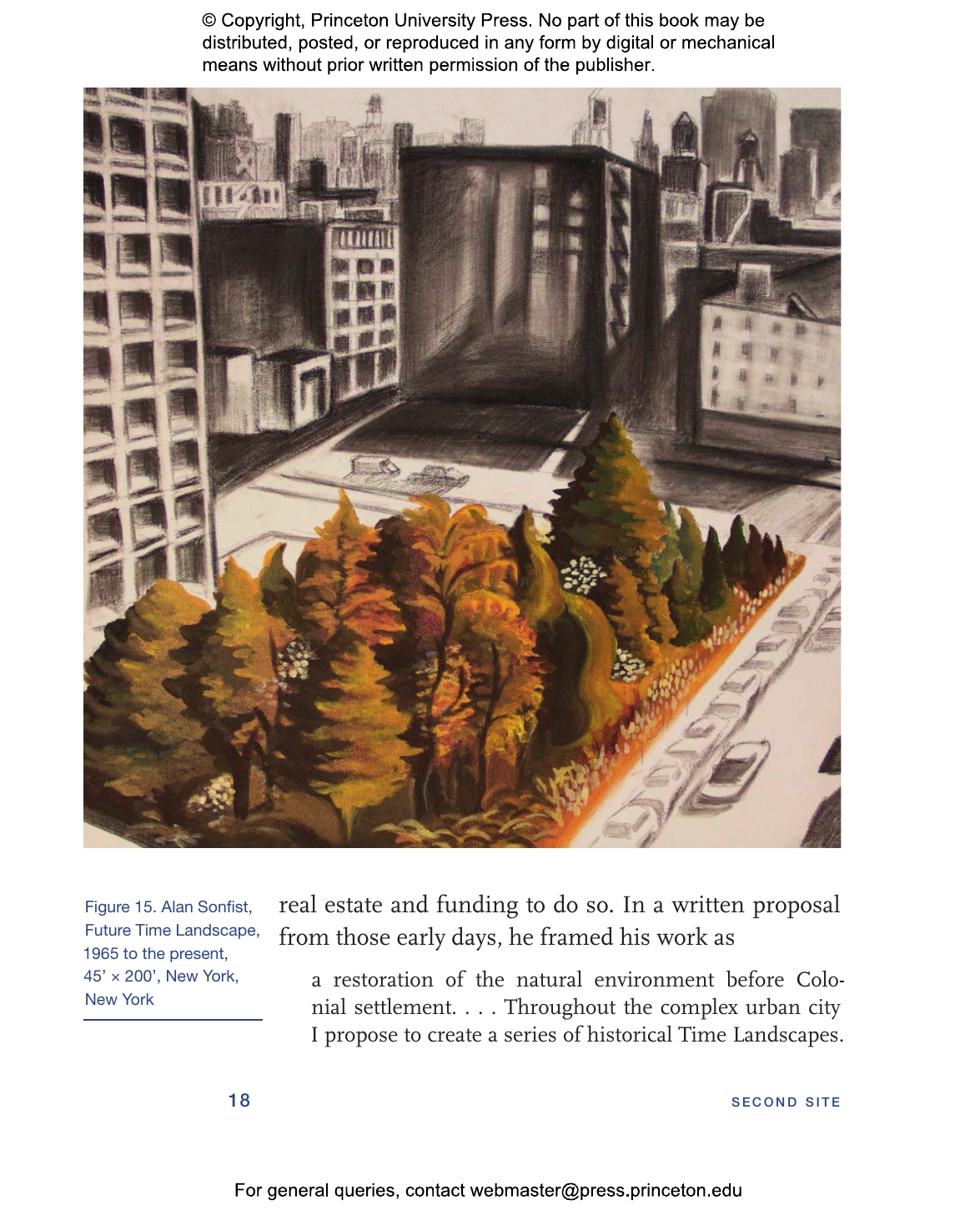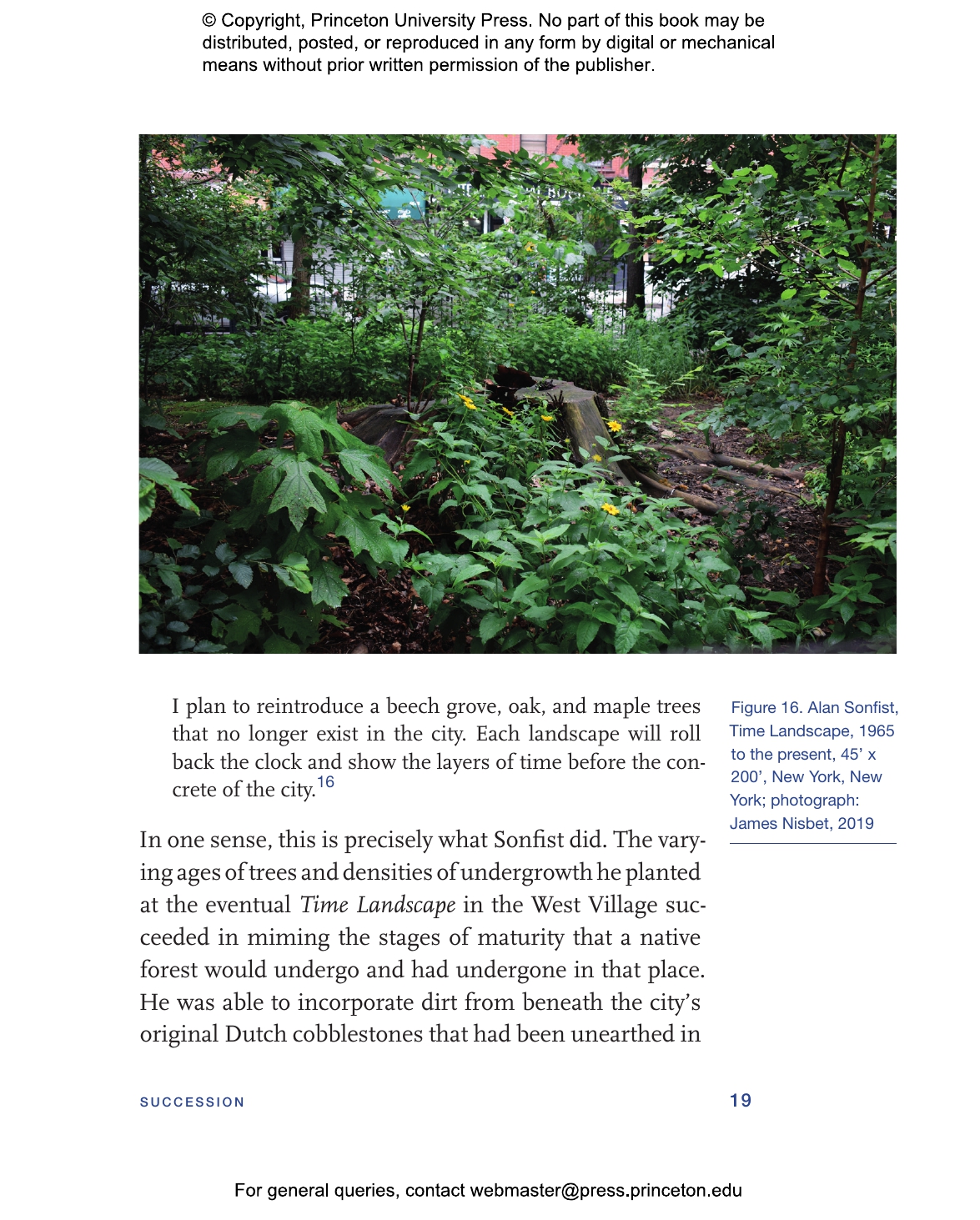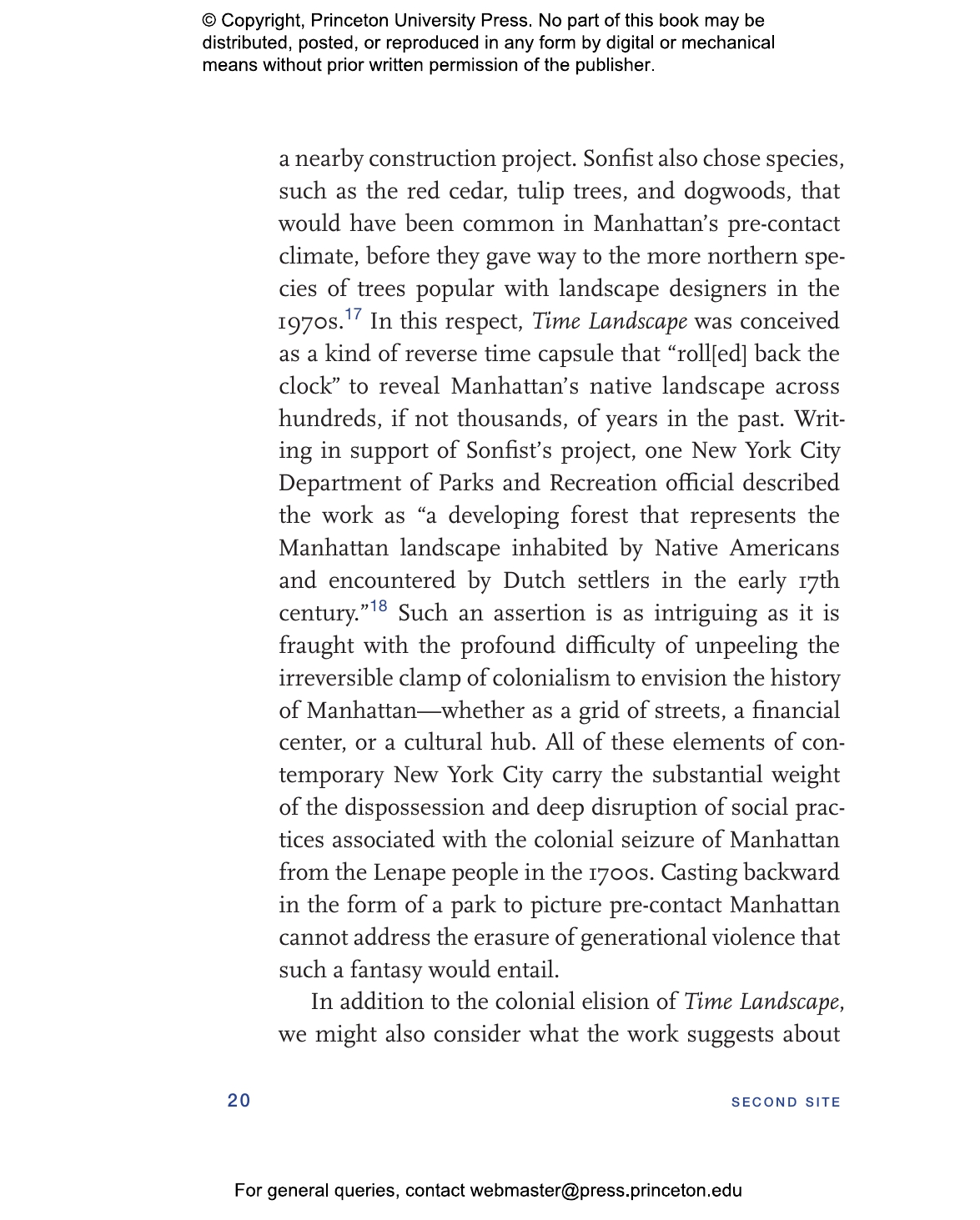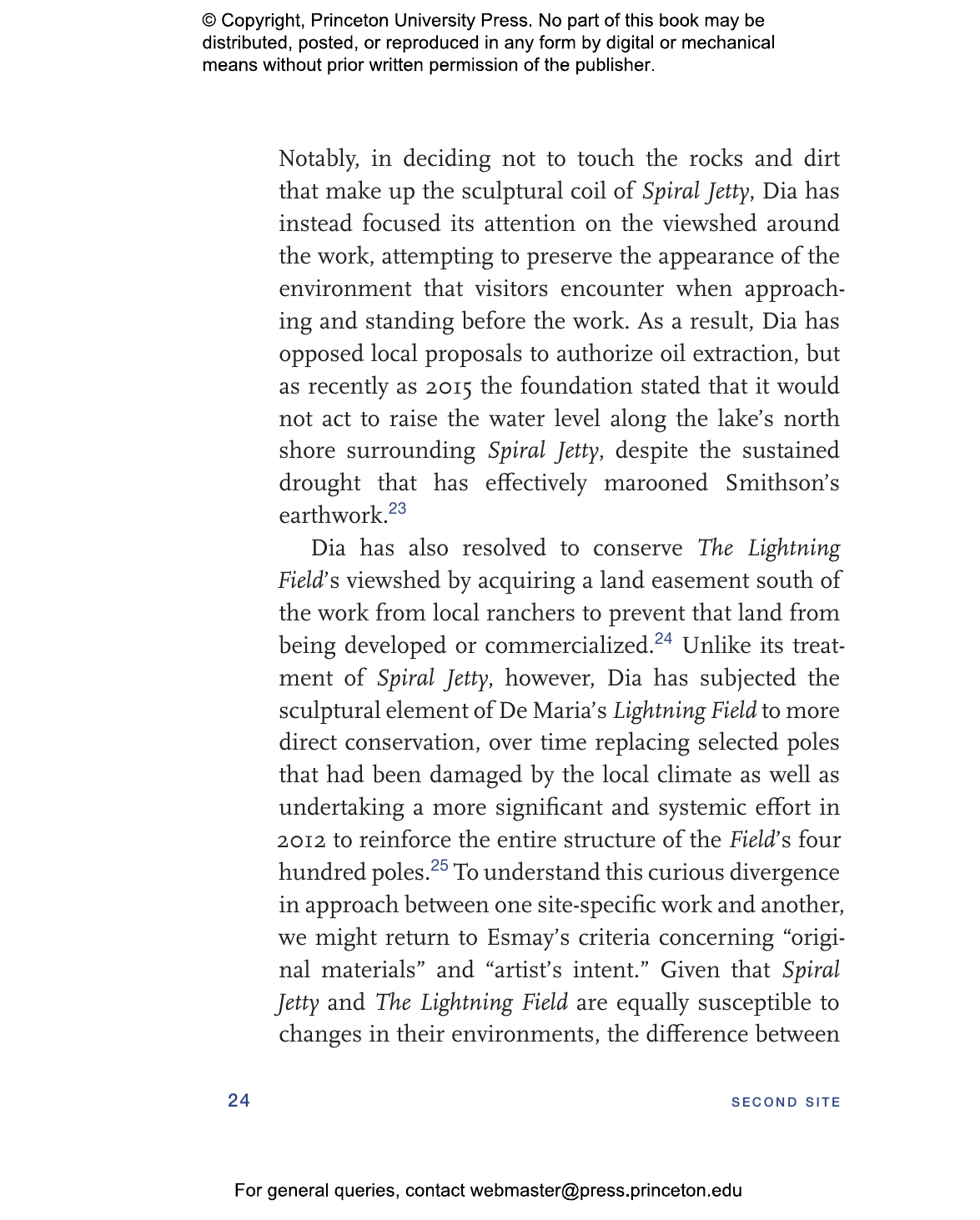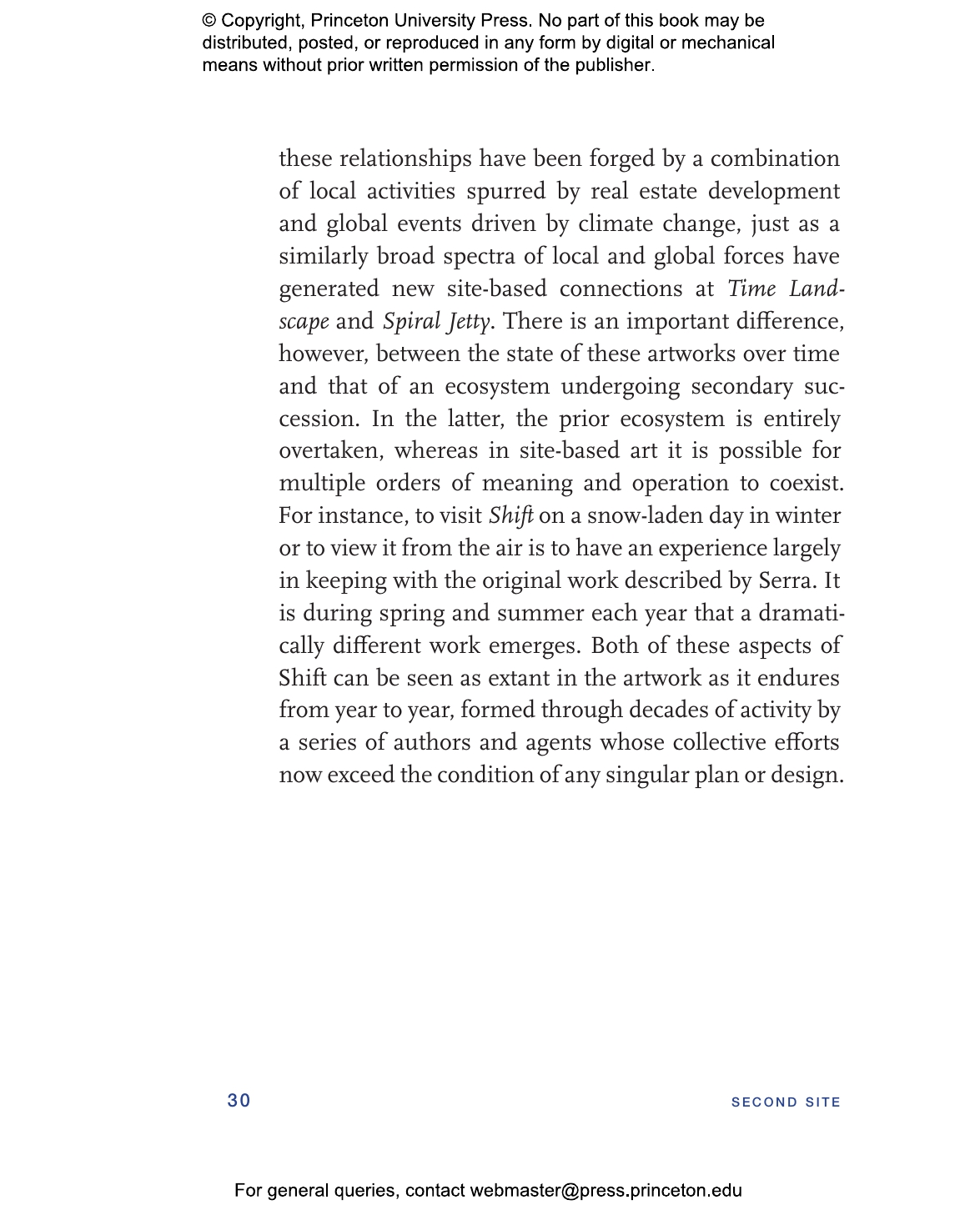In the decades after World War II, artists and designers of the land art movement used the natural landscape to create monumental site-specific artworks. Second Site offers a powerful meditation on how environmental change and the passage of time alter and transform the meanings—and sometimes appearances—of works created to inhabit a specific place.
James Nisbet offers fresh approaches to well-known artworks by Ant Farm, Rebecca Belmore, Nancy Holt, Richard Serra, and Robert Smithson. He also examines the work of less recognized artists such as Agnes Denes, Bonnie Devine, and herman de vries. Nisbet tracks the vicissitudes wrought by climate change and urban development on site-specific artworks, taking readers from the plains of Amarillo, Texas, to a field of volcanic rock in Mexico City, to abandoned quarries in Finland.
Providing vital perspectives on what it means to endure in an ecologically volatile world, Second Site challenges long-held beliefs about the permanency of site-based art, with implications for the understanding and conservation of artistic creation and cultural heritage.
Awards and Recognition
- Honorable Mention for the Alanna Bondar Memorial Book Prize, Association for Literature, Environment, and Culture in Canada
James Nisbet is associate professor of art history and visual studies at the University of California, Irvine. He is the author of Ecologies, Environments, and Energy Systems in Art of the 1960s and 1970s and the coeditor of The Invention of the American Desert: Art, Land, and the Politics of Environment. He lives in Irvine, California.
"A brisk, contemplative, and often brilliant study. . . . Second Site is an example of how issues of climate change, global politics, and social justice currently inform and redirect the ways in which we understand the history of site-specificity and land art. "—Enrique Ramirez, Landscape Architecture Magazine
"[Nisbet’s] achievement in Second Site is the way in which he places a number of site-specific works of varying renown into conversation, recontextualizing each through the lens of its secondary effects and impacts, and layering this onto urgent concerns around conservation — both curatorially and ecologically."—Emily Cadotte, Esse Magazine
"[Second Site] is a welcome addition to a body of literature on site-specificity, or the idea that a particular space or place is integral to the meaning of an artwork, where activities, events, or objects turn a location into a unique site. . . . Concise and thought-provoking."—Brianne Cohen, caa.reviews
"Engaging and provocative. Nisbet persuasively argues that we need to think closely about the physical and ecological changes in many works of land art, revisiting them not as originals but as works that inherently embrace change."—Mark A. Cheetham, University of Toronto, author of Landscape into Eco Art: Articulations of Nature since the '60s
"Second Site is a crisply written, knowledgeable, and theoretically sophisticated exploration of temporality in site-specific art."—Gary Shapiro, author of Earthwards: Robert Smithson and Art after Babel





















